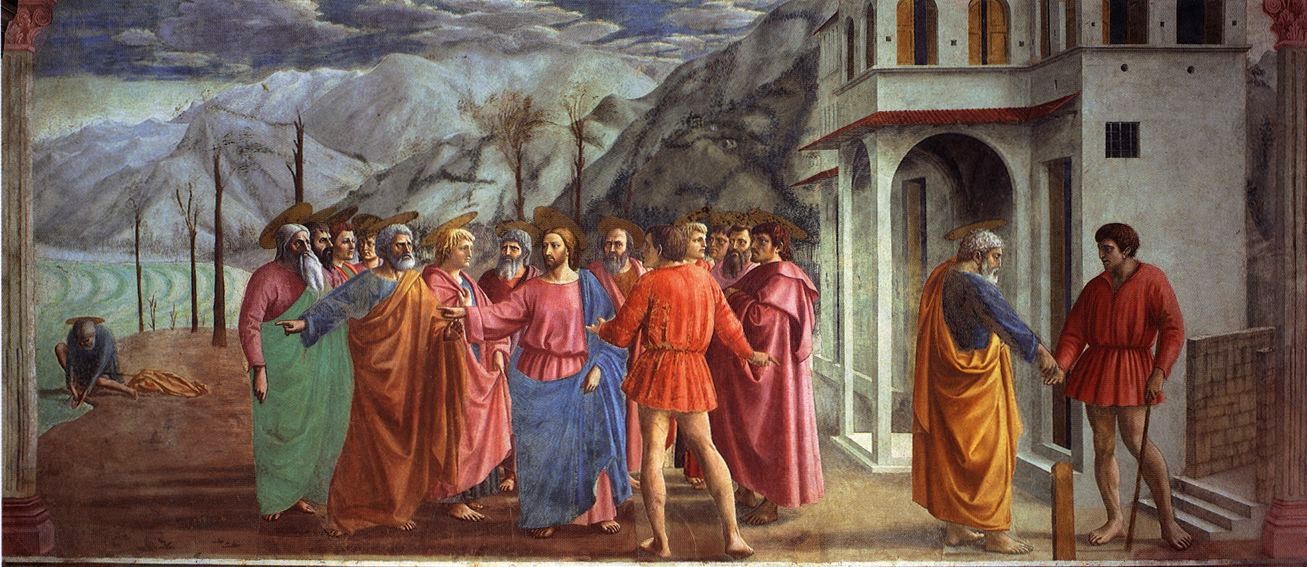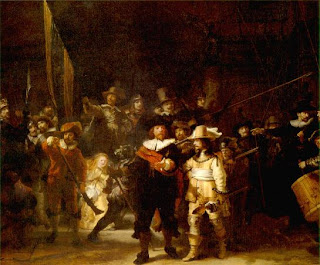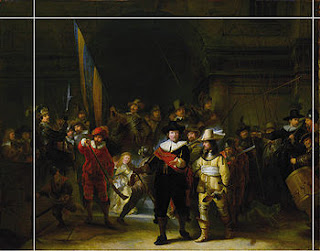The portraits of the Duke and
Duchess of Urbino by Piero della Francesco are a diptych i.e.: a painting of
two panels connected by a hinge. It can be seen in the Uffizi Gallery in Florence
Federigo came to prominence as a leader of mercenaries and through his ill-gotten gains and riches made Urbino a city of wealth and importance. It was there that Piero della Francesca painted the diptych, possibly as a memorial to the duchess.
Federigo came to prominence as a leader of mercenaries and through his ill-gotten gains and riches made Urbino a city of wealth and importance. It was there that Piero della Francesca painted the diptych, possibly as a memorial to the duchess.
The compositional layout was possibly
designed to disguise the duke’s facial disfigurement as he had lost an eye and
suffered severe damage to his nose during a tournament. His tanned, wart
covered face is contrasted with the pale, smooth, deathlike complexion of his
wife. She shows a strange high forehead which was the fashion of the time. The
details of her jewels, headdress and sleeve show the mastery of Piero’s ability
to paint various textures in an authentic manner. The landscape appears to be of
another world, almost dreamlike and has qualities seen in the painting of the
Mona Lisa by Leonardo da Vinci which was painted about thirty years later.
The closed panels reveal paintings showing the duke and
duchess in carriages, his drawn by horses and hers by unicorns symbolising her
purity. He is wearing the armour of a victorious leader and is crowned in
victory with Justice, Wisdom, Valour personified by his side, while Battista is
surrounded by the figures of Faith, Hope and Charity. Regardless of the
sentiments that the duke wanted to have portrayed to show his strength and
power, he is left in an eternal limbo facing his dead wife in an unspoken
conversation




